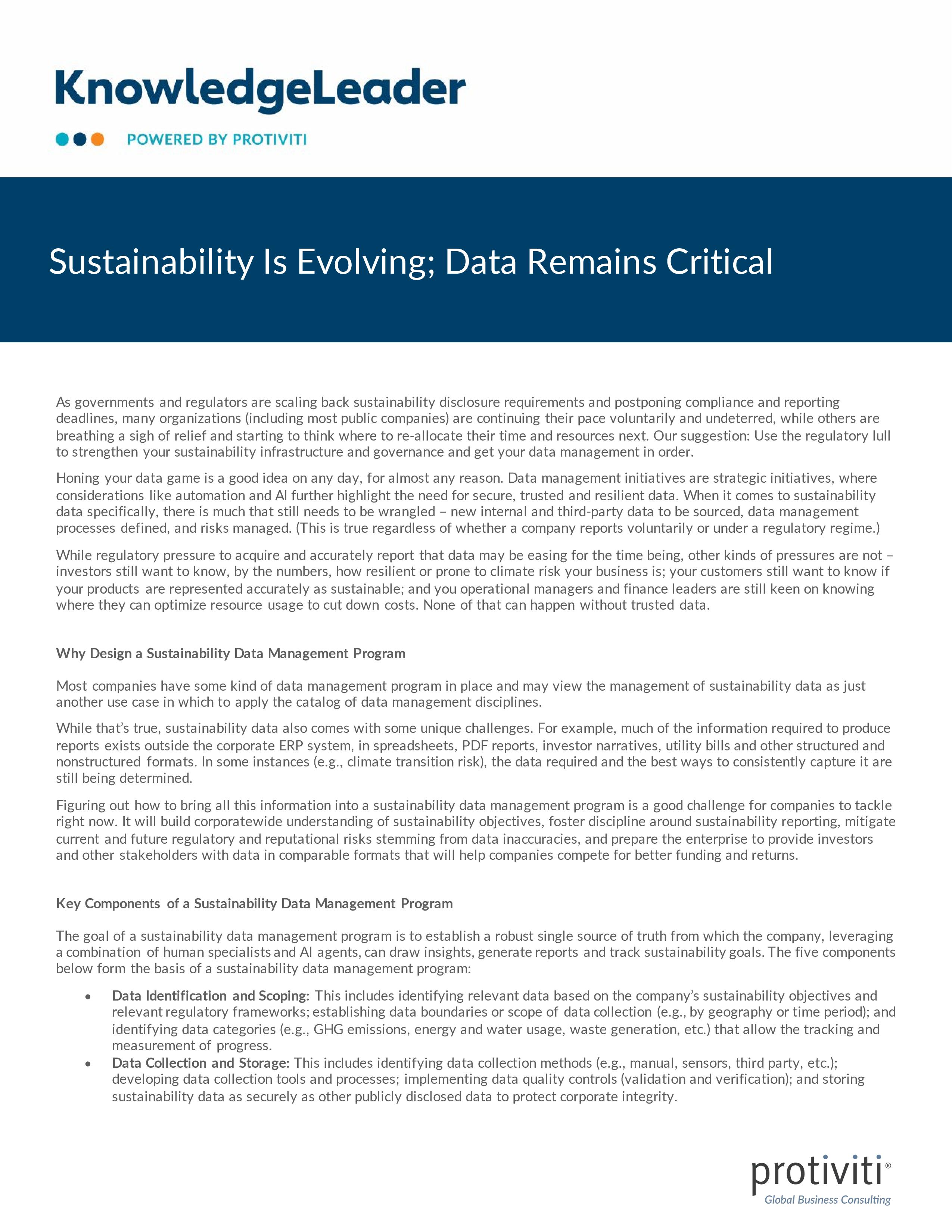Sustainability Is Evolving; Data Remains Critical

Key Components of a Sustainability Data Management Program
As governments and regulators are scaling back sustainability disclosure requirements and postponing compliance and reporting deadlines, many organizations (including most public companies) are continuing their pace voluntarily and undeterred, while others are breathing a sigh of relief and starting to think where to re-allocate their time and resources next. One suggestion is to use the regulatory lull to strengthen your sustainability infrastructure and governance and get your data management in order. Most companies have some kind of data management program in place and may view the management of sustainability data as just another use case in which to apply the catalog of data management disciplines.
While that’s true, sustainability data also comes with some unique challenges. For example, much of the information required to produce reports exists outside the corporate enterprise resource planning (ERP) system, in spreadsheets, PDF reports, investor narratives, utility bills and other structured and nonstructured formats. In some instances (e.g., climate transition risk), the data required and the best ways to consistently capture it are still being determined. The goal of a sustainability data management program is to establish a robust single source of truth for the company. Leveraging a combination of human specialists and AI agents can draw insights, generate reports, and track sustainability goals.